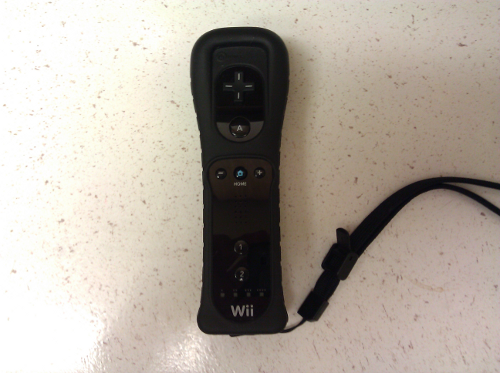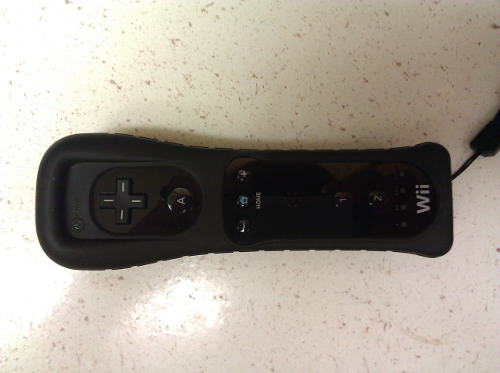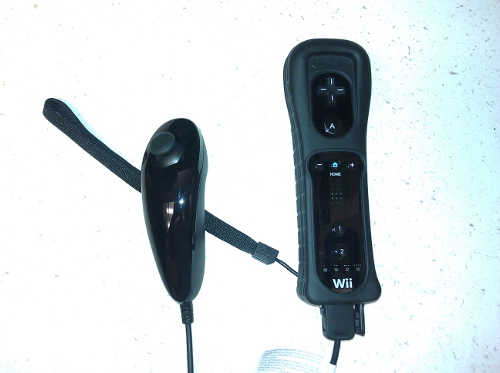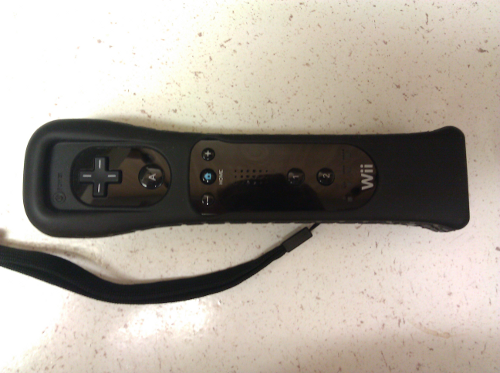
The thought that has always stuck with me pertaining to the Wiimote is that it is not conducive to playing video games in the way that we play them. The Wii really does not feel like it belongs in this generation of video game console at all. This serves as a testament to the power of motion control in gaming. In this instance, being the first to make it work was the major contributing factor to the success of the product.
The fundamental problem I have with the Wiimote is that the motion control falls apart when the gaming gets fast. It feels sluggish in response. No matter how much I play, I cannot get over the fact that I am actually waving the Wiimote at a sensor bar either below or above my television, not at the television itself. I really do not think it tracks that well either, no matter the sensitivity setting on the controller. In many ways, this is why I would think the six-axis control on the PS3 Dual Shock 3 would win over the Wiimote any day. Yet, developers do not go out of their way to support the six-axis, because it feels awkward when gaming gets fast. You have to hold the controller in a certain way and move just right in order to do what you want. In a lot of ways, it turns video games into a process of mimicking a bunch of hand signals. This goes the same for Microsoft's solution. I do not buy into, "Your body is the controller." That directly translates into, "Charades for your television." Bottom line, a gaming controller will have a place in gaming for at least the next couple generations of consoles. We have at least a few technological feats in processing to go before natural feeling motion control is fully viable.
The Wiimote falls apart further though when you begin using it as a traditional controller. Whether you want to or not, many games require you to spend some time using the Wiimote as a traditional controller. There are several configurations for this. Some games have you hold the Wiimote sideways. Another method has you connect what is known as the nunchuck and control with the nunchuk in the left hand and the Wiimote in the right. Other methods include various other "classic" controllers Nintendo has released for use with certain games. The better games will allow you to choose the control method; however, most will make you use either the sideway method or the nunchuck method.
Holding the Wiimote sideways looks and feels much like holding a Nintendo controller. In terms of gameplay, the shortage of buttons highlights the feel. While it is by far my favorite non-motion control method, it feels every bit as old-fashioned as it should. Many games done in 3D almost have an auto-movement feel. Essentially, the game plays like a 2D Game, with the character moving from left-to-right in a tightly confined space. Nintendo could have planned for the thought that a developer would want to use the controller in such a way and at least included an analog stick.

The nunchuck setup is my least favorite, but it is the best configuration for 3D games with wide-open areas. The nunchuck is an analog stick with shoulder buttons; therefore, it does feel natural in your left hand. The fact that is only connected to the Wiimote with a cord is a bit awkward at first though. After a while, you do get used to it; however, it still feels strangely old. Like the motion control configuration, I do not believe it holds up to the faster moving games.

There are many add-ons for the Wiimotes. Mostly, these come in the form of plastic molds that you can stick the Wiimote in while playing. This includes various guns, sports peripherals, and driving peripherals. Just about all of these are widely unnecessary. There is on add-on the deserves special mention though. The Plus extension is a worthless addition forced upon the consumer for Nintendo to make more money on what would otherwise be a relatively cheap controller. It was bad enough when the Plus extension was thrown in as an add-on. Now, it is built into the Wiimote. This makes the sideways configuration less comfortable, because you must stretch your thumb further to use those buttons. I am not okay with this. There are only a small handful of games that use the Plus extension and most of those are not fun. Spare me the worthless attachments please.

There is no denying that Nintendo has paved the way for motion technology to have a place in gaming. However, in doing so, I believe they have really shown the true limitations of such technology as well. While other companies are currently emulating the motion control experience, the fact that most games still require you to use a controller in a traditional controller way proves that the video game controller as we know it is here to stay.